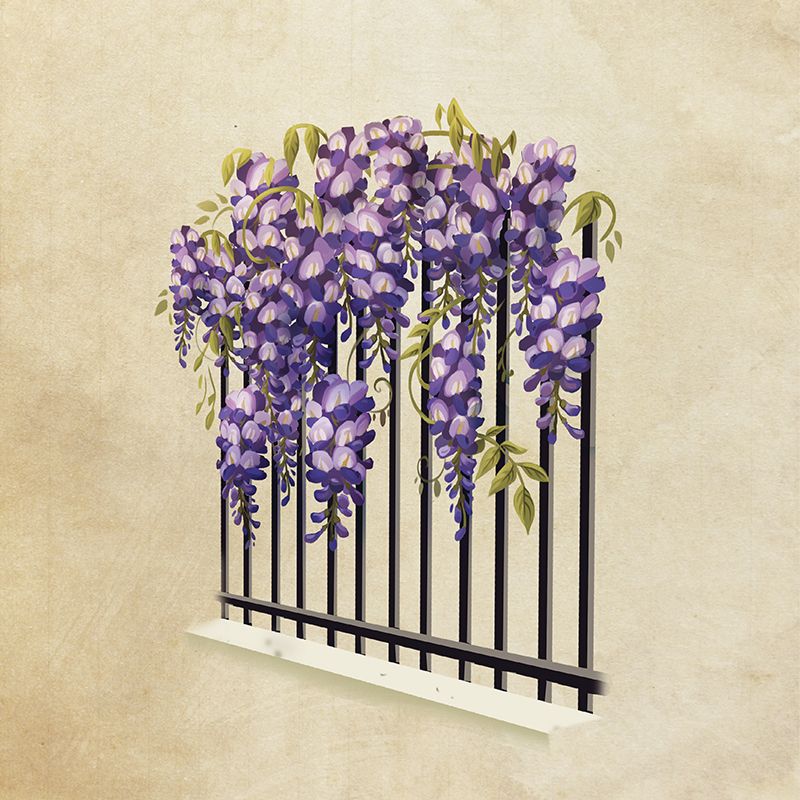Post your own photos using the hashtag #wisteriahysteria

You know spring has arrived in the Lowcountry when you see long lavender garlands of wisteria cascading from trees, fences, and trellises. A showstopper among the Lowcountry’s flowering plants, this deciduous woody vine is hardy and tenacious. While 10 species can be found around the world, our native variety is American wisteria (Wisteria frutescens), also known as ”Atlantic wisteria.” This month, the purple flowers become Instafamous as the backdrop in photos by fashion influencers, master gardeners, and awed tourists alike.
Tough Tendrils Wisteria climbs by twining its tendrils around any available support. Yet because of the plant’s immense strength (mature vines can grow to the size of a man’s arm) and length (vines grow to 40 feet or more), sturdy structures are required. If wisteria grows on houses, it can cause serious damage over time.
Social Climber Marco Polo discovered Asian varieties in the 13th century, and Chinese wisteria was brought to the United States in 1816. Two years later, botanist Thomas Nuttall named the plant in honor of his friend and patron of botany, Caspar Wistar. Although a vine, the name of the native American species frutescens means “shrubby.” Around 1830, Japanese wisteria was introduced to the US. The non-native species are considered invasive because of their ability to choke out other indigenous plants.
Timeless Beauty Wisteria is a pleasing garden choice not only for its stunning appearance but for its hardiness and drought tolerance. Flowers usually bloom the first year, and vines can easily survive for more than 100 years. The oldest known plants in China are 250 years old.
Birds & Bees Wisteria is among the top 10 plants attractive to hummingbirds. The mildly fragrant lavender-blue flowers also are inviting to butterflies and bees. A bonus for Lowcountry gardeners: it’s unappealing to deer.
Yin & Yang Telling the species apart is difficult, but one noticeable difference is how the vines climb. Both American wisteria and Chinese wisteria (W. sinensis) twine in a counterclockwise direction, while Japanese wisteria (W. floribunda) winds clockwise. Also, the pods of Asian varieties have a velvety surface covered with short hairs, but native pods are smooth.
Peas in a Pod As a member of the legume family, wisteria produces seeds in pods, similar to those seen in peas and beans. When Charleston’s native species was introduced in England in the early 1700s, it was called “Carolina kidney,” or simply “bean plant.” Caution: the seeds contain a toxic compound called wisteri, which is poisonous if ingested.